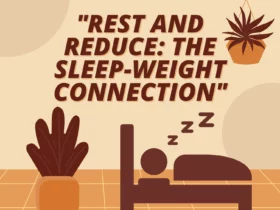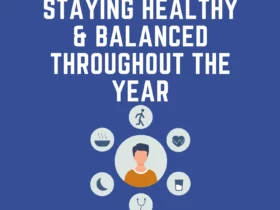Unlock the secrets to enhanced flexibility and mobility with our comprehensive guide to yoga for flexibility. Explore expert tips, targeted poses, and tailored routines designed to help you increase your range of motion, reduce stiffness, and find greater freedom in your body. Whether you’re a beginner or an experienced yogi, discover how to stretch, strengthen, and balance your way to newfound flexibility with our SEO-optimized resource.http://healthlikeaboss.com
Dive deep into the world of yoga for flexibility with our comprehensive guide, meticulously crafted to help you achieve newfound suppleness and agility. Explore a treasure trove of expert insights, actionable tips, and targeted poses meticulously designed to unlock your body’s full range of motion. Whether you’re a seasoned yogi seeking to deepen your stretches or a beginner looking to improve your flexibility, our SEO-optimized resource has everything you need to embark on your journey towards greater mobility and freedom. Join us as we explore the transformative power of yoga, and discover how a dedicated practice can help you stretch, strengthen, and expand your body and mind. Say goodbye to stiffness and hello to a more flexible, resilient you—starting today!
Enhance Flexibility with Yoga Stretches
Flexibility isn’t just about touching your toes; it’s about unlocking your body’s full potential for movement and vitality. Yoga, with its gentle yet powerful approach, is a transformative tool in enhancing flexibility. In this guide, we’ll dive into the world of yoga, exploring how its practices can lead you towards a more supple, agile, and resilient you.
The Power of Yoga in Enhancing Flexibility
Yoga is a holistic practice that addresses the entire body. Through a combination of stretches, poses, and controlled breathing, it gently encourages muscles and joints to release tension, lengthen, and become more pliable. This approach not only improves flexibility but also nurtures a sense of self-awareness and mindfulness.
Yoga Poses for Improved Flexibility
https://healthlikeaboss.com/yoga-equipment/
Forward Fold (Uttanasana): This pose stretches the hamstrings, calves, and lower back, promoting flexibility in the spine and legs.
Downward-Facing Dog (Adho Mukha Svanasana): A foundational pose that stretches the entire body, particularly the legs, arms, and back.
Cobra Pose (Bhujangasana): Opens the chest, shoulders, and back, while strengthening the spine.
Pigeon Pose (Eka Pada Rajakapotasana): An excellent hip opener that also stretches the thighs and lower back.
Triangle Pose (Trikonasana): Stretches the legs, hips, and side body, promoting overall flexibility.
Butterfly Pose (Baddha Konasana): Focuses on opening the hips and stretching the inner thighs.
Cat-Cow Pose (Marjaryasana-Bitilasana): This dynamic movement loosens the spine and improves spinal flexibility.
Seated Forward Bend (Paschimottanasana): Stretches the entire back, particularly targeting the spine and hamstrings.

Breathing Techniques for Flexibility
Practicing controlled and rhythmic breathing (pranayama) is integral to enhancing flexibility. Deep, steady breaths calm the nervous system, allowing muscles to relax and lengthen more effectively.
The Role of Consistency and Patience
Improving flexibility is a gradual process that requires patience and dedication. Regular practice, combined with mindful attention to your body’s signals, will yield significant results over time.
Mindfulness and Flexibility
Flexibility extends beyond the physical realm. The practice of yoga encourages mental flexibility – the ability to adapt, let go, and embrace change. This mental agility complements the physical gains, fostering a more balanced and resilient outlook on life.
Incorporating Yoga for Flexibility into Your Routine
Whether you’re a seasoned yogi or just starting, integrating yoga for flexibility can be tailored to your level. Start with a sequence that matches your current abilities, and gradually advance as you feel more comfortable.
Incorporating Breathwork and Mindfulness
In addition to physical poses, breathwork and mindfulness techniques can also play a key role in improving flexibility. Deep, diaphragmatic breathing helps to relax the body and mind, making it easier to release tension and move more freely. Incorporate breath awareness into your yoga practice by synchronizing your breath with your movements, focusing on long, slow exhales to deepen your stretches and enhance your flexibility.
Embracing the Journey
As you embark on your journey towards greater flexibility through yoga, remember that progress takes time and patience. Be gentle with yourself and honor your body’s limitations, avoiding the temptation to push too hard or force yourself into uncomfortable positions. Instead, approach your practice with curiosity and openness, exploring the sensations in your body and allowing yourself to grow and evolve at your own pace.
Can yoga really improve flexibility?
Absolutely! Yoga involves a combination of stretches, poses, and controlled breathing techniques that gradually increase range of motion and flexibility. Consistent practice over time can lead to significant improvements.
How often should I practice yoga for flexibility gains?
Aim for at least 3-4 sessions per week. Consistency is key to seeing progress in your flexibility. Even shorter, focused sessions can be highly effective.
What if I’m not naturally flexible? Can I still benefit from yoga?
Yes, definitely! Yoga is accessible to people of all levels of flexibility. The practice is about meeting your body where it is and working to improve at your own pace.
How long does it typically take to notice improvements in flexibility?
Results vary depending on individual factors like starting flexibility, frequency of practice, and consistency. Some individuals may notice improvements in a few weeks, while others may take longer. Patience and dedication are key.
Can I overdo it and risk injury by pushing too hard to increase flexibility?
It’s important to approach flexibility gains with patience and mindfulness. Avoid forcing your body into positions and listen to your body’s signals. Gradual progress is safer and more sustainable in the long run.
Conclusion
The journey towards greater flexibility through yoga is not just about touching your toes or mastering advanced poses—it’s about cultivating a deeper connection between your body, mind, and spirit. Throughout this comprehensive guide on yoga for flexibility, we’ve delved into the myriad ways in which a dedicated yoga practice can transform your physical capabilities, enhance your overall well-being, and unlock newfound levels of freedom and mobility.
As we’ve explored various poses, techniques, and sequences aimed at improving flexibility, it’s important to remember that progress is a journey, not a destination. Each time you step onto your mat, you have the opportunity to deepen your practice, explore new boundaries, and embrace the present moment with openness and acceptance. Whether you’re able to touch your toes with ease or still working towards that goal, every breath you take and every stretch you perform brings you one step closer to greater flexibility and vitality.













Leave a Reply